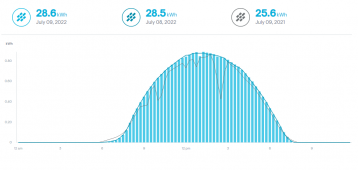400bird
Solar Wizard
Not that schedule, I'm on E1
Nevermind, I'm a lier and had to go check: E-TOU-C
Nevermind, I'm a lier and had to go check: E-TOU-C
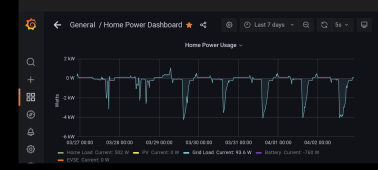
but look at this math.....
My current cheapest rate is now 33 cents. My solar panels produce 8,000 KWHs a year. That's $2,640 a year in power I don't have to buy. And even the cheapest tiered rate is now 28 cents. Even that works out to $2,240 per year. my solar install cost me $12,000 out of pocket. My pay off is now under 5 years!!! Why doesn't every single house have solar panels?


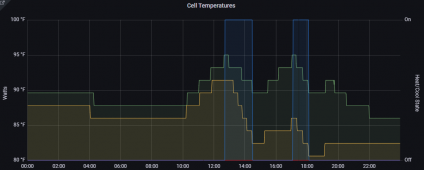
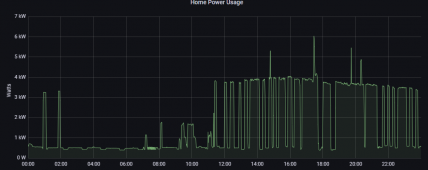
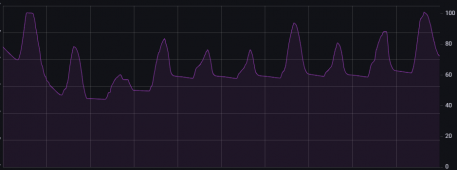
I NEED MORE SOLAR PANELS.
The Enphase inverters are grabbing more power from the panels than most system can. They come on very early in the morning and stay running out late. I am 25% over paneled, but that is only enough to make them clip when it is cool yet sunny in spring. In the hot summer days, it does get close to clip at solar noon, but there is still a tick of headroom. At best, a super efficient DC to DC MPPT charge controller might put 2 to 5% more total energy into the batteries, and then I still lose over half of the gain on the resulting total AC energy back out through the inverter. The night time power would be a little better, the day time power would be a little worse. It is nearly a wash.You're using Enphase, correct?
How badly over-paneled are they? How much PV capacity going to waste, in terms of kWh/day?
Perhaps there would be a better way to use them (different panels in a different configuration) and a GT PV inverter or DC SCC that would capture more from the panels you've got.
This becomes a problem when the BMS cannot handle the 100amps pushed to it. My scenario it keeps switching of the bms. I had to adjust the percentage downwardsI have not done a long enough off grid test to see it fill up the batteries. Half my iQ7 micros went offline and the sun was dipping after 4 pm also. Next time I shut down all of the PC's (4 running now) and the Dish Hopper, the WD-TV 1T hard drive, 3T hard drive on my router, etc. I will try another power fail simulation and try to log it all.
Yes, Schneider does warn that under an AC coupled off grid situation, it will try to push all of the extra AC power into the battery for a bit before it can start adjusting. I can see that being a problem with a smaller battery bank. If they were new 100 Amp Hours of LG, cells, thy should be good, but if you are not sure, it could be trouble. My system should be fine. Even if my 360 amp hour bank is at 4.09 volts, it should still take my full 3,900 watts for a few minutes without a problem. That works out to just over 68 amps if there is no load at all in my house at solar noon on a cool day. It would take about 20 minutes to push the cells to 4.2 volts.
Fault F01 means the output voltage was too low. There could be several reasons for this.My xw8548 has smoked these board. With code F55 and F01. Where could be the problem. The damage was extended to Daly Bms 16s 250amps. The charger is set to about 15% of its capacity. Pv 16pcs of 345w through conext mppt 60amp SCC.
I am 25% over paneled, but that is only enough to make them clip when it is cool yet sunny in spring. In the hot summer days, it does get close to clip at solar noon, but there is still a tick of headroom.
Even having the current dialed down is not good enough.This becomes a problem when the BMS cannot handle the 100amps pushed to it. My scenario it keeps switching of the bms. I had to adjust the percentage downwards
The ridge board of my roof is running east to west, with the south face turned about 20 degrees to the west. Putting panels on the other side of the roof would be facing mostly north, turned 20 degrees east. They would make good summer morning power, but then fall off very fast, and winter production would be horrible. Going straight flat horizontal is looking very good though, which is why I keep looking at my garage roof. The east side awning idea also look good for morning production, as it is actually turned 20 degrees to the south. Even in winter, that area would make very good morning production. When my batteries run down too low overnight, it is not a bad idea to have early sun to start charging them up.OK, no opportunity there. It was the severe over-paneling due to undersized microinverters I was thinking of.
I figure SE and SW facing panels, paralleled and connected to an inverter which still isn't over-paneled, could deliver more kWh.
If at a steep angle to each other like 60 degree acute, then 300W || 300W = 300W but for more hours. Such an acute angle would reduce kWh/panel/day more than a 90 degree angle. Smaller footprint than all flat, but can't squeeze a large flat array (crinkling the surface into /\/\/\ panels) without them shading each other. Needs to be a long row of /\, or spread out /\....../\....../\, or / on one roof face, \ on other roof face.
Five 400W panels shouldn't be too hard to squeeze in. One row along the parapet of your garage roof?
How much improvement in efficiency of A/C might you get if still-hot discharge tube coming from outside condenser had a water jacket, further cooled by pool water or similar thermal mass?
You could take wire going to A/C, put it through a smaller breaker panel, one branch for A/C and one for GT PV inverter. If you want to prevent backfeed (current or wattage limits?) add a relay to connect/disconnect AC power of GT PV, controlled by AC power to A/C. Backfeed, if used, should comply with 120% rule and land at far end of main breaker.
